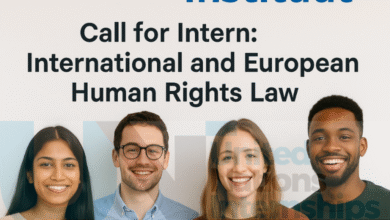Tier 1, Tier 2, Tier 3 applicants. Navigating UNDP Job Applications After U.S. Funding Cuts: What You Need to Know
Tier 1, Tier 2, Tier 3 applicants. Navigating UNDP Job Applications After U.S. Funding Cuts: What You Need to Know
Ever wondered what Tier 1, Tier 2, and Tier 3 mean on UNDP’s job portal?
Since the funding cuts initiated under the Trump administration, the United Nations has undergone significant restructuring. These financial constraints pushed agencies like UNDP (United Nations Development Programme) to streamline operations, adjust contract modalities, and clarify eligibility pathways for applicants.
For job seekers, this means the rules of the game have changed. It’s no longer enough to just meet the technical requirements—you also need to understand how tiers of eligibility and contract structures affect who can apply.
In practice, UNDP’s tiered system now determines whether a position is restricted to internal staff or open to wider external applicants. Knowing where you fall in these tiers can make the difference between getting considered—or being screened out before the process begins.

The United Nations has undergone significant restructuring since the funding cuts initiated under the Trump administration. These financial constraints have forced agencies like UNDP (United Nations Development Programme) to streamline operations, restructure contracts, and create clearer pathways for external applicants versus internal staff. For job seekers, this means the rules of the game have changed: understanding tiers of eligibility and contract structures is now critical.

Why the Shift Matters
The U.S. has historically been the UN’s single largest contributor. When Washington slashed its funding, UNDP and other agencies tightened recruitment systems to prioritize staff already inside the UN ecosystem while still keeping the door open to external candidates. This tiered system balances loyalty to existing staff with the need for fresh expertise. Applicants who don’t pay attention to these distinctions risk wasting time on roles they’re not eligible for.
Understanding UNDP’s Tier System
Every UNDP vacancy clearly states the applicable Tier of eligibility. Here’s what each means:
- Tier 1: Internal candidates holding permanent (PA) or fixed-term (FTA) appointments with UNDP, UNCDF, or UNV. These are considered the most secure and senior contracts.
- Tier 2: Candidates already working inside the UNDP system but on less stable contracts—temporary appointments (TA) and regular personnel service agreements (PSA).
- Tier 3: Everyone else. This includes staff from other UN agencies on different contract types, consultants, and all external applicants with no UNDP affiliation.
In short: Tier 1 gets first consideration, Tier 2 follows, and Tier 3 comes last—but Tier 3 is still very much in play.
Examples From Current Vacancies
Looking at real job postings illustrates how these tiers operate:
- Project Analyst (Open to all applicants), NPSA-8 – UNDP, Dhaka, Bangladesh
- Project Engineering Officer (Open to all applicants), NPSA-8 – UNDP, Aden, Yemen
- Technical Analyst – Waste Management (part-time, 70%), NPSA-8 – UNDP
These roles are open to Tier 3 applicants, meaning anyone can apply regardless of UN affiliation. - Project Analyst – Inclusive Governance Initiative (Open to Tier 3 applicants), NPSA-9 – UNDP, Lusaka, Zambia
Here, the announcement explicitly highlights Tier 3, signaling external candidates are welcome and competitive for the role.
Meanwhile, some higher-level or sensitive positions may be restricted to Tier 1 or Tier 2 only, meaning outsiders have no access.
What Applicants Should Do
- Read the Tier note first. If the vacancy restricts to Tier 1 or Tier 2 and you’re an outsider, it can be a challenge to be considered unless they don’t find a suitable internal candidate
- Track NPSA levels. NPSA-8 or NPSA-9 indicates the seniority and pay band, roughly mid-level professional positions.
- Tailor your application. Highlight relevant field experience, adaptability, and prior international exposure especially for fragile contexts like Yemen or governance roles in Zambia.
- Stay flexible. External candidates (Tier 3) often get their break through project-based, analyst, or technical posts, which can then lead to internal mobility.
Final Takeaway
For UNDP job seekers in today’s funding environment, knowledge of tiers is as important as your CV. The cuts have forced a leaner, more competitive recruitment process. But with the right strategy—focusing on Tier 3 openings and aligning with UNDP’s programmatic priorities—external candidates still stand strong chances of entering the system. We are encourage applicants to still consider applying in case the hiring managers dont find suitable candidates for Tier 1, Tier 2 and Tier 3
For more insights about International careers especially after USA funding cuts to the UN and other International Organisations , follow our linkeldn platforms , whatsapp channel and website




